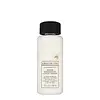What's inside
What's inside
 Key Ingredients
Key Ingredients

No key ingredients
 Benefits
Benefits

 Concerns
Concerns

 Ingredients Side-by-side
Ingredients Side-by-side

Water
Skin ConditioningBrassica Alcohol
EmollientCetearyl Alcohol
EmollientStearyl Alcohol
EmollientPropanediol
SolventCetyl Alcohol
EmollientBrassicyl Isoleucinate Esylate
Emulsion StabilisingPrunus Amygdalus Dulcis Oil
Skin ConditioningPersea Gratissima Oil
Skin ConditioningAloe Barbadensis Leaf Juice
Skin ConditioningHydrolyzed Corn Protein
Skin ConditioningHydrolyzed Wheat Protein
Skin ConditioningHydrolyzed Soy Protein
HumectantPhenoxyethanol
PreservativeIsododecane
EmollientCetyl Esters
EmollientBehentrimonium Chloride
PreservativeIsopropyl Myristate
EmollientCetrimonium Chloride
AntimicrobialGuar Hydroxypropyltrimonium Chloride
Skin ConditioningPanthenol
Skin ConditioningCitric Acid
BufferingLeuconostoc/Radish Root Ferment Filtrate
AntimicrobialWater, Brassica Alcohol, Cetearyl Alcohol, Stearyl Alcohol, Propanediol, Cetyl Alcohol, Brassicyl Isoleucinate Esylate, Prunus Amygdalus Dulcis Oil, Persea Gratissima Oil, Aloe Barbadensis Leaf Juice, Hydrolyzed Corn Protein, Hydrolyzed Wheat Protein, Hydrolyzed Soy Protein, Phenoxyethanol, Isododecane, Cetyl Esters, Behentrimonium Chloride, Isopropyl Myristate, Cetrimonium Chloride, Guar Hydroxypropyltrimonium Chloride, Panthenol, Citric Acid, Leuconostoc/Radish Root Ferment Filtrate
Water
Skin ConditioningCetyl Alcohol
EmollientCetearyl Alcohol
EmollientGlycerin
HumectantMyristyl Alcohol
EmollientBehentrimonium Chloride
PreservativeIsopropyl Palmitate
EmollientNeopentyl Glycol Diheptanoate
EmollientHydroxyethylcellulose
Emulsion StabilisingSodium Benzoate
MaskingSorbitol
HumectantIsododecane
EmollientSodium Dehydroacetate
PreservativeEthylhexylglycerin
Skin ConditioningDisodium EDTA
Argania Spinosa Kernel Oil
EmollientChlorhexidine Dihydrochloride
AntimicrobialButyrospermum Parkii Butter
Skin ConditioningCitric Acid
BufferingMacadamia Ternifolia Seed Oil
EmollientMoroccan Lava Clay
AbrasiveTocopheryl Acetate
AntioxidantTetrahexyldecyl Ascorbate
AntioxidantGarcinia Mangostana Peel Extract
Skin ConditioningMorinda Citrifolia Fruit Extract
Skin ConditioningLycium Barbarum Fruit Extract
AstringentCamellia Sinensis Leaf Extract
AntimicrobialPunica Granatum Fruit Juice
MaskingCoffea Arabica Seed Extract
MaskingEuterpe Oleracea Fruit Extract
Water, Cetyl Alcohol, Cetearyl Alcohol, Glycerin, Myristyl Alcohol, Behentrimonium Chloride, Isopropyl Palmitate, Neopentyl Glycol Diheptanoate, Hydroxyethylcellulose, Sodium Benzoate, Sorbitol, Isododecane, Sodium Dehydroacetate, Ethylhexylglycerin, Disodium EDTA, Argania Spinosa Kernel Oil, Chlorhexidine Dihydrochloride, Butyrospermum Parkii Butter, Citric Acid, Macadamia Ternifolia Seed Oil, Moroccan Lava Clay, Tocopheryl Acetate, Tetrahexyldecyl Ascorbate, Garcinia Mangostana Peel Extract, Morinda Citrifolia Fruit Extract, Lycium Barbarum Fruit Extract, Camellia Sinensis Leaf Extract, Punica Granatum Fruit Juice, Coffea Arabica Seed Extract, Euterpe Oleracea Fruit Extract
Ingredients Explained
These ingredients are found in both products.
Ingredients higher up in an ingredient list are typically present in a larger amount.
This ingredient is a preservative and often used for it's anti-static properties. You'll most likely see this ingredient in hair conditioners.
It does not cause irritation or sensitization in leave-on products at 1-5%.
Cetearyl alcohol is a mixture of two fatty alcohols: cetyl alcohol and stearyl alcohol. It is mainly used as an emulsifier. Emulsifiers help prevent the separation of oils and products. Due to its composition, it can also be used to thicken a product or help create foam.
Cetearyl alcohol is an emollient. Emollients help soothe and hydrate the skin by trapping moisture.
Studies show Cetearyl alcohol is non-toxic and non-irritating. The FDA allows products labeled "alcohol-free" to have fatty alcohols.
This ingredient is usually derived from plant oils such as palm, vegetable, or coconut oils. There is debate on whether this ingredient will cause acne.
Due to the fatty acid base, this ingredient may not be Malassezia folliculitis safe.
Learn more about Cetearyl AlcoholCetyl Alcohol is a fatty alcohol. Fatty Alcohols are most often used as an emollient or to thicken a product.
Its main roles are:
Though it has "alcohol" in the name, it is not related to denatured alcohol or ethyl alcohol.
The FDA allows products labeled "alcohol-free" to have fatty alcohols.
Learn more about Cetyl AlcoholCitric Acid is an alpha hydroxy acid (AHA) naturally found in citrus fruits like oranges, lemons, and limes.
Like other AHAs, citric acid can exfoliate skin by breaking down the bonds that hold dead skin cells together. This helps reveal smoother and brighter skin underneath.
However, this exfoliating effect only happens at high concentrations (20%) which can be hard to find in cosmetic products.
Due to this, citric acid is usually included in small amounts as a pH adjuster. This helps keep products slightly more acidic and compatible with skin's natural pH.
In skincare formulas, citric acid can:
While it can provide some skin benefits, research shows lactic acid and glycolic acid are generally more effective and less irritating exfoliants.
Most citric acid used in skincare today is made by fermenting sugars (usually from molasses). This synthetic version is identical to the natural citrus form but easier to stabilize and use in formulations.
Read more about some other popular AHA's here:
Learn more about Citric AcidIsododecane is a fragrance, emollient, and solvent.
As an emollient, it helps your skin stay soft and hydrated. Emollients help trap moisture into your skin.
Isododecane's role as a solvent makes it a great texture enhancer. It spreads smoothly on skin and does not leave a sticky feeling behind. Isododecane also helps prevent color transfer in makeup products.
Isododecane is not absorbed into skin.
Learn more about IsododecaneWater. It's the most common cosmetic ingredient of all. You'll usually see it at the top of ingredient lists, meaning that it makes up the largest part of the product.
So why is it so popular? Water most often acts as a solvent - this means that it helps dissolve other ingredients into the formulation.
You'll also recognize water as that liquid we all need to stay alive. If you see this, drink a glass of water. Stay hydrated!
Learn more about Water